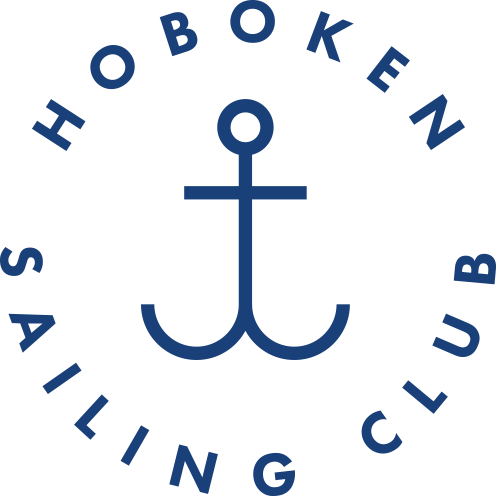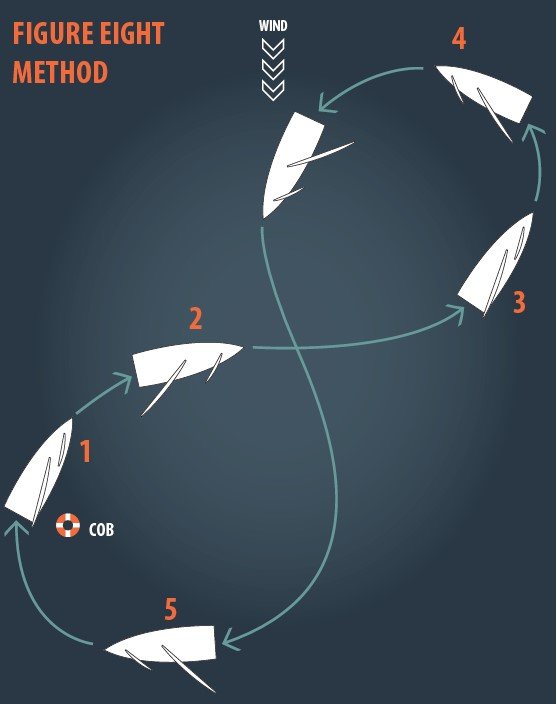Why is the Person In The Water Drill (MOB) so important?
It seams counterintuitive. If there is a person in the water, you stop the boat, turn on the engine, drop the sails and pick them up. That’s the safest way because your boat speed is not dictated by the direction of the wind. So why are sailing competency assessments so keen for students to execute the Person Overboard Drill? The answer is boat speed.
Controlling boat speed on a sailboat without engine assist is a critical skill that when mastered, offers a wealth of options. A well-executed MOB drill proves that the Skipper can control boat speed in all wind conditions with the entire sail plan remaining intact.
There are 2 conventions that are taught, one being the Quick Stop and the other the Figure 8. When in a real person overboard situation, the Quick Stop is preferable because you do a circle and keep the person within site more easily. The Figure 8 necessitates a considerable distance between the person and the vessel in order to execute the boat speed reduction maneuvers. Another important difference between the two is sail trim. The Quick Stop trims both the main and the jib into a close-hauled position. If the boat is already on a close hauled course, nothing needs to be done by the crew until the final approach to the person in the water. The Figure 8 luffs the sails to control boat speed which can be a bit more labor intensive for the crew.
Quick Stop competency means slowing the boat, maneuvering into a circular route around the person in the water, slowly gybing the boat while releasing the jib and easing the main while approaching the person in the water on a close reach course. A skipper is considered competent when they stop alongside the person in the water. If this drill is performed with the ethos of controlling boat speed, success is more likely. Slowing the boat allows the Skipper to control the boat’s position in relation to the person overboard and nail the approach. The boat must approach on a close reach with an err to the beam reach because a close-hauled approach might end with the boat in irons and the person in the water upwind. The Skippers decision on the direction of the approach is easier when the boat speed is already slow or stopped. Once on the close reach approach, the jib and the main are luffing and if the boat is too slow, the main sheet can be used as a “gas pedal”.
Figure 8 competency differs as the boat speed can be controlled by leaving the sails under-trimmed for the duration. Sailing away from the person in the water on a reach or beam reach gives the crew time to ease sails, drop a spinnaker and then the Skipper rounds up to tack. There is no need to trim the sails during this tack because the goal is have control over boat speed as opposed to speed. The approach to the person in the water is identical to the Quick Stop. Close reach, jib luffing, main used as a gas pedal and a slow boat.
My appreciation of this drill has grown due to the benefits of boat speed competency. Sailing to a dock, picking up a mooring under sail and rafting up to an anchored boat under sail are a just few of the real-world applications. Practicing the person in the water drill is the best way to develop this important skill and it’s fun!



